#toshiyuki hosokawa
Explore tagged Tumblr posts
Text

#polls#movies#welcome back mr. mcdonald#welcome back mr mcdonald#90s movies#koki mitani#toshiaki karasawa#kyoka suzuki#masahiko nishimura#keiko toda#toshiyuki hosokawa#requested#have you seen this movie poll
37 notes
·
View notes
Text

Meiko Kaji (梶芽衣子) and Toshiyuki Hosokawa (細川俊之) in Female Convict Scorpion: Grudge Song (女囚さそり 701号怨み節), 1973, directed by Yasuharu Hasebe (長谷部安春).
#Meiko Kaji#梶芽衣子#Female Convict Scorpion#Female Prisoner Scorpion#Yasuharu Hasebe#Toshiyuki Hosokawa#長谷部安春#Female Convict Scorpion: Grudge Song#女囚さそり 701号怨み節#細川俊之#press photo
59 notes
·
View notes
Text
Akiko Nakamura and Toshiyuki Hosokawa - Amai Sasayaki (Paroles, Paroles Cover)
youtube
#akiko nakamura#toshiyuki hosokawa#amai sasayaki#jpop#j-pop#jpop recommendation#j-pop recommendation#Spotify#Youtube
0 notes
Text
Mariko Okada, Toshiyuki Hosokawa





Yoshishige Yoshida
- Eros + Massacre
1969
34 notes
·
View notes
Photo
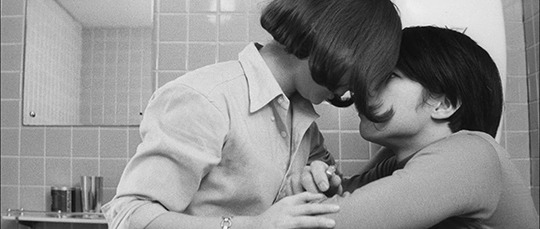


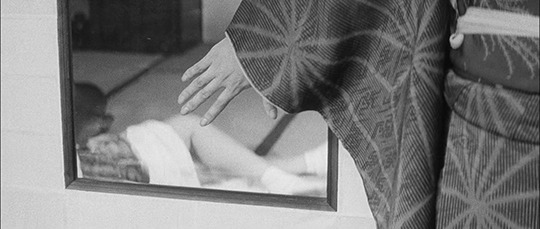
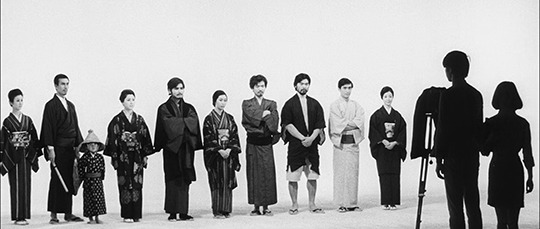

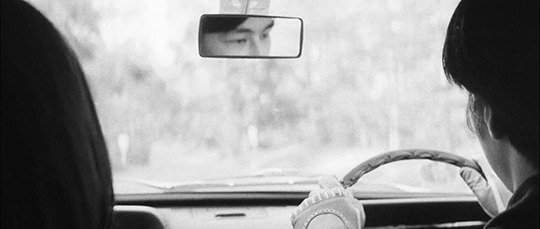

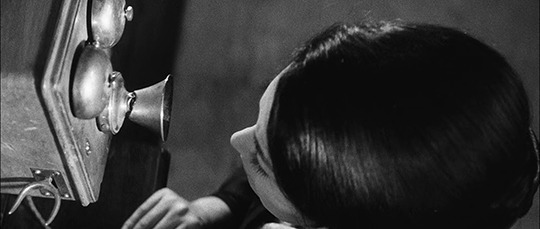

"...revolution means self-denial in order to eliminate the self."
Eros + Massacre · エロス+虐殺
Dir. by Yoshida Yoshishige, 1969
#eros + massacre#eros plus massacre#Erosu purasu gyakusatsu#エロス+虐殺#yoshida yoshishige#1969#yoshishige yoshida#mariko okada#okada mariko#Toshiyuki Hosokawa#hosokawa toshiyuki#Yuko Kusunoki#kusunoki yuko
8 notes
·
View notes
Photo




Confession, Theory, Actress | Yoshishige Yoshida | 1971
#Ineko Arima#Toshiyuki Hosokawa#Yoshishige Yoshida#Yoshida#Confession Theory Actress#1971#Confessions Among Actresses
16 notes
·
View notes
Text
Anime Biography: Toshiyuki Hosokawa
Anime Biography: Toshiyuki Hosokawa

Toshiyuki Hosokawa was born in Fukuoka, Japan in 1940. He began his acting career when he joined the Bungakuza theatrical troupe after leaving Gakushuin University.
Hosokawa’s earliest credits come from the 1960’s, with roles in theatrical films. During that decade, he had roles in Warm Current in 1966, Zatoichi Breaks Jail in 1967, Namida gawa in 1967, Impasse in 1967, Fight for the Gloryin…
View On WordPress
0 notes
Video
youtube
2 notes
·
View notes
Photo

Shinya Tensai Bakabon TV Anime announced for july 2018 (Pierrot+)!!
STAFF
Director: Hosokawa Toru
Character design: Takaaki Wada
Music Production: Avex Pictures
Sound Director: Hiromi Kikuta
Animation Production: studio Pierrot +
CAST
Arata Furuta
Miyu Irino
Noriko Hidaka
Ai Nonaka
Toshiyuki Morikawa
Akira Ishida
Takahiro Sakurai
9 notes
·
View notes
Text
OP / ED Performers Revealed for Late Night Gag Anime "Shinya! Tensai Bakabon"
The opening and ending theme performers have been announced for Shinya! Tensai Bakabon ("Late at Night! Genius Bakabon"), an upcoming TV anime based on the gag manga by Fujio Akatsuka (Osomatsu-kun) about a foolish boy and his deranged and eccentric family members.
The opening theme, entitled "BAKA-BONSOIR!", is performed by B.P.O -Bakabon-no Papa Organization-, a voice unit comprised of the main cast of the series performing in-character, including Arata Furata as Papa, Miyu Irino as Bakabon, Noriko Hidaka as Mama, Ai Nonaka as Hajime, Toshiyuki Morikawa as Honkan, Akira Ishida as Rerere no Oji-san, and Takahiro Sakurai as Unagi-inu. "BAKA-BONSOIR!" features composition, lyrics, and arrangement by TECHNOBOYS PULCRAFT GREEN-FUND (above).
The as-yet-untitled ending theme will be performed by hip-hop group Ketsumeishi (above).
The original��Tensai Bakabon manga was serialized from 1967 - 1976 in Kodansha's Weekly Shōnen Magazine, and the series has also been adapted into a TV anime on four previous occasions. Shinya! Tensai Bakabon is directed by Toru Hosokawa and features animation by Pierrot+. The new series will begin broadcasting in Japan in July of 2018.
Sources:
MoCa
Official Shinya! Tensai Bakabon TV anime home page
---
Paul Chapman is the host of The Greatest Movie EVER! Podcast and GME! Anime Fun Time.
1 note
·
View note
Photo

Meiko Kaji (梶芽衣子), Akiko Mori (森秋子) and Toshiyuki Hosokawa (細川俊之) in Female Convict Scorpion: Grudge Song (女囚さそり 701号怨み節), 1973, directed by Yasuharu Hasebe (長谷部安春).
#Meio Kaji#梶芽衣子#Female Prisoner Scorpion#Female Convict Scorpion#Yasuharu Hasebe#Female Convict Scorpion: Grudge Song#Akiko Mori#Toshiyuki Hosokawa#女囚さそり 701号怨み節#森秋子#細川俊之#長谷部安春#press photo
64 notes
·
View notes
Photo

[42] Eros Plus Massacre (1969, dir. Yoshihige Yoshida)
In contrast to the pared-down narrative and cast of Yoshida's immediately preceding film, 'Farewell to the Summer Light', the three-and-a-half hours of unrelenting experimentation found in Yoshida’s next film preclude any attempt at summative analysis. Ostensibly, Eros Plus Massacre is a historical epic depicting early twentieth century anarchists Itō Noe (Mariko Okada) and Sakae Ōsugi (Toshiyuki Hosokawa), concentrating on the triangulation between Noe and between Ōsugi’s other lovers—his wife, Hori Yasuko (renamed Akiko Hiraga, and played by Kazuko Inenon), and his mistress, journalist Kamichika Ichiko (renamed Masaoka Itsuko afer the real-life Ichiko threatened to sue, and played by Yuko Kusunoki) —and culminating in Ichiko/Itsuko’s attempted murder of Ōsugi, ten years before he and Noe were murdered by the police. This timeline is intercut with scenes of the aimless present-day students/actors/dropouts Eiko (Toshiki Ii) and Wada (Dajiro Harada), reading about the earlier events which they half-recreate, half imitate, half-dismiss. Signalled by the constant psychedelic rock soundtrack, the contemporary segments seems to signal their own contemporaneity, but the slower, more patient historical segments are also characterised by stringent formal experimentation which provides both an equivalent to and critique of the passions that unfold within them, as well as the lens of the historical film itself. As the two timelines begin to blur in the more surreal focus of the film’s second half, such experimentation becomes an increasing part of the film’s method. The point, as Yoshida noted in interviews, is to view the past for the way it views the future, not to reduplicate it in the present. Yoshida opens the film with a startling scene in which Eiko interviews Noe’s daughter, framed as a spotlit interrogation with uncomfortable echoes of State torture. As such, the refusal to divulge, to narrate, to present a coherent chronicle of the past comes to seem an act of resistance in itself: the subject refuses to answer questions, insisting on the exploitation of mothers as such, rather than a focus on the spectacular life of her own mother as either revolutionary exemplar or cautionary tale. The present, Yoshida suggests, treats historical figures like the urn containing Ōsugi’s ashes which opposing rugby teams kick about a field in one of the film’s most startling sequences. This section culminates in the multiple re-tellings of the attempted murder of Ōsugi which serve as the film’s climax, and which the modern-day students take to attest, not to the breakdown of sexual experimentation—the return of the repressed in the guise of murderous jealousy—but as the point to which it led all along, embraced as the height of ecstasy. Significantly, their attempts to combine eros and thanatos, eros plus massacre, are seen to be conducted through the modality of film itself. Scenes of the pyromaniac Wada setting fire to rolls film or wielding a cine-camera with shades of Powell’s ‘Peeping Tom’, and of film rolls turned into a noose as the director first encountered having sex with Eiko—kicks away canisters of celluloid in a final, suicidal act—problematise the act of representation at every stage, as does the extreme, light-bleached low contrast black and white, the anti-symmetrical framing (honing in one detail rather than attempting an overall picture). Would a revolutionary cinema be destructive—a thanatopic self-immolation akin to the anarchist philosophy espoused by Ōsugi, at once egoist and self-destructive—or constructive, of alternative visions of social life represented by the dreams of free love and revolution?
(More here: http://streamsofexpression.blogspot.com/2020/08/eros-plus-massacre-1969-dir-yoshishige.html)
0 notes
Photo



[Pics] 池袋ウエストゲートパーク SONG&DANCE (ikebukuro west gate park song&dance)
genepro pics & infos under the cut^^










Cast:

Oono Takurou as Makoto (マコト)

Yabe Masaki as Kyouichi (京一)

Shiota Kouhei as Masa (マサ)

Ebisawa Kenji

Ooto Tomomi

Ozeki Riku

Katou Mao

Kojima Kotori

Sasaoka Yuuya

Takahashi Shunichi

Tomida Daiki

Hosokawa Yuu

Mitsui Ryou

Itou Yuuka as Minegishi Kaoru (峰岸薫)

Tokunaga Junko as Minegishi Kaoru (峰岸薫)

Tanaka Yuuya as Yokoyama (横山)

Someya Toshiyuki as Takashi (タカシ)
homepage natalie geigeki enterstage
#大野拓朗#oono takurou#矢部昌暉#yabe masaki#塩田康平#shiota kouhei#海老澤健次#ebisawa kenji#大音智海#ooto tomomi#尾関陸#ozeki riku#加藤真央#katou mao#小島ことり#kojima kotori#笹岡征矢#sasaoka yuuya#高橋駿一#takahashi shunichi#富田大樹#tomida daiki#細川優#hosokawa yuu#三井理陽#mitsui ryou#伊東佑華#itou yuuka#徳永純子#tokunaga junko
6 notes
·
View notes
Text
Joker Game Anime: List of the main people who worked at it
A lot of people worked at the Joker Game anime... but somehow I couldn’t find an English list anywhere.
So, since while translating the ‘story’ pages from the official web I had to find out who was who, I decided to also catch this chance to make a list for the ones that the official web takes care to credit for each episode (the authors of the script and storyboard and the director and the animation director).
There are of course many more people behind each episode and just the names might not tell you much but I still think it’s worth to know them.
EP 01
Script/脚本: Kishimoto Taku (岸本 卓) Storyboard/絵コンテ - Director/演出: Nomura Kazuya (野村和也) Animation Director/作画監督: Yahagi Toshiyuki (矢萩利幸)
EP 02
Script/脚本: Kishimoto Taku (岸本 卓) Storyboard/絵コンテ: Nomura Kazuya (野村和也) Director/演出: Uematsu Junichi (安乱純志) Animation Director/作画監督: Nakamura Miyuki (中村深雪)
EP 03
Script/脚本: Kishimoto Taku (岸本 卓) Storyboard/絵コンテ: Hamana Takayuki (浜名孝行) Director/演出: Ninomiya Takeshi (二宮壮史) Animation Director/作画監督: Kubota Yasutaka (窪田康高) - Kotani Kyōko (小谷杏子)
EP 04
Script/脚本: Kishimoto Taku (岸本 卓) Storyboard/絵コンテ: Takeuchi Atsushi (竹内敦志) Director/演出: Hosokawa Hideki (細川ヒデキ) Animation Director/作画監督: Yamaguchi Asuka (山口飛鳥)
EP 05
Script/脚本: Kishimoto Taku (岸本 卓) Storyboard/絵コンテ: Kise Kazuchika (黄瀬和哉) Director/演出: Kise Kazuchika (黄瀬和哉) Animation Director/作画監督: Kise Kazuchika (黄瀬和哉)
EP 06
Script/脚本: Kishimoto Taku (岸本 卓) Storyboard/絵コンテ: Sunouchi Yūsuke (須之内佑典) Director/演出: Sunouchi Yūsuke (須之内佑典) Animation Director/作画監督: Kubota Yasutaka (窪田康高) - Ishī Akiharu (石井明治)
EP 07
Script/脚本: Kishimoto Taku (岸本 卓) Storyboard/絵コンテ: Komura Kōji (小村方宏治) Director/演出: Komura Kōji (小村方宏治) Animation Director/作画監督: Shin’no Ryōta (新野量太) - Morita Fumi (森田 史)
EP 08
Script/脚本: Kishimoto Taku (岸本 卓) Storyboard/絵コンテ: Satō Yūzō (佐藤雄三) Director/演出: Mori Daiki (森 大貴) Animation Director/作画監督: Yamaguchi Asuka (山口飛鳥)
Ep 09
Script/脚本: Kishimoto Taku (岸本 卓) Storyboard/絵コンテ: Satō Yūzō (佐藤雄三) Director/演出: Mori Daiki (森 大貴) - Ninomiya Takeshi (二宮壮史) Animation Director/作画監督: Yamaguchi Asuka (山口飛鳥)
EP 10
Script/脚本: Kishimoto Taku (岸本 卓) Storyboard/絵コンテ: Urasawa Naoki (荒川直樹) Director/演出: Ninomiya Takeshi (二宮壮史) Animation Director/作画監督: Ōsaka Ryōta (古川良太) - Shin’no Ryōta (新野量太) - Morita Fumi (森田 史)
EP 11
Script/脚本: Kishimoto Taku (岸本 卓) Storyboard/絵コンテ: Itatsu Yoshimi (板津匡覧) Director/演出: Itatsu Yoshimi (板津匡覧) Animation Director/作画監督: Nakamura Miyuki (中村深雪)
EP 12
Script/脚本: Kishimoto Taku (岸本 卓) Storyboard/絵コンテ: Nomura Kazuya (野村和也) Director/演出: Nomura Kazuya (野村和也) Animation Director/作画監督: Nakamura Miyuki (中村深雪) - Kubota Yasutaka (窪田康高)
25 notes
·
View notes
Photo

Hai Gamezoners !!! ^_^
Ada yang masih ingat atau tau dengan kisah kekonyolan dari keluarga Bakabon dalam anime Tensai Bakabon atau Si Jenirus Bakabon? Lima puluh tahun setelah serial manganya pertama kali terbit, serial anime legendaris yang satu ini akan segera hadir kembali. Diumumkan oleh studio anime Pierrot+, anime terbaru dari serial Bakabon ini akan hadir pada bulan Juli 2018, dengan judul "Shinya! Tensai Bakabon".
Toru Hosokawa akan menjadi sutradara sekaligus penulis naskah anime ini. Takashi Yamamoto menjadi asisten sutradaranya. Desain karakternya dikerjakan oleh Takaaki Wada, sedangkan posisi pengarah suara dipegang oleh Hiromi Kikuta.

Berikut adalah para seiyuu yang akan bermain di anime ini.
Arata Furuta sebagai Bakabon
Miyu Irino sebagai ayah Bakabon
Noriko Hidaka sebagai ibu Bakabon
Ai Nonaka sebagai Hajime, adik Bakabon
Akira Ishida sebagai Rerere no Ojisan
Toshiyuki Morikawa sebagai Honkan, si petugas polisi
Takahiro Sakurai sebagai Unagi-Inu
Sementara itu, empat mangaka yang terdiri dari Tetsuya Chiba, Kenichi Kitami, Mitsuru Adachi, dan Rumiko Takahashi membuat ilustrasi spesial untuk menyambut pengumuman pembuatan anime baru Tensai Bakabon.

Anime Tensai Bakabon diadaptasi dari serial manga yang ditulis oleh mendiang Fujio Akatsuka. Pertama kali terbit pada tahun 1967, manga ini kemudian diadaptasi menjadi empat serial anime yang diproduksi antara tahun 1970 hingga 2000, film anime yang dirilis pada tahun 2015 dan serial live-action pada 2016. Sang komikus sendiri telah meninggal pada tahun 2008 karena penyakit kanker esofagus.
Di Indonesia, serial komiknya dirilis oleh penerbit Elex Media Komputindo. Sementara itu, serial animenya pernah ditayangkan di SCTV dan TPI. Di Indonesia, serial ini dikenal dengan nama Si Jenius Bakabon.
(Sumber: kaorinusantara.or.id)
Buat kamu yang berada di area UMM dan sekitarnya….. Gamezone Internet Cafe & Playstation Rental kini HADIR di: Jl. Raya Tlogomas No.29G Ruko Tlogomas Indah II Kav. 7 (Depan UMM Kampus 3)
Kamu bisa pilih hiburan seru yang bisa mengusir badmoood-mu dengan fasilitas….. – Fiber Optic internet – Free WiFi – Sharp 40″ LED – Sofa terbaik – Mesin terbaru, dengan stick original wireless – UPS backup untuk saving games jikalau ada problem PLN – Game update terbaru & bisa tambah games by request – Minuman & makanan murah. – Berbagai pilihan paket hemat mulai IDR 5K – Akumulasi main 10 jam GRATIS 1 jam – Extra bersih – Parkir luas & aman – Buka 24 jam
Mau ngopi, nge-es, ngemil juga bisa ?? Harganya? Tenang…….ramah di kantong kok ^_^ Jangan lupa mampir ya….. ??
www.GAMEZONE.co.id SALES – SERVICE – RENTAL
INTERNET CAFE & PLAYSTATION RENTAL Jl. MT Haryono 73, Ruko Dinoyo Indah Kavling 1 Malang 65145 (200m barat laut Unibraw) HP/SMS/Whatsapp: 085604909049
Branch : LANDUNGSARI Jl. Raya Tlogomas No.29G, Ruko Tlogomas Indah II Kav. 7 65144 (Depan UMM Kampus 3 Malang) HP/SMS/Whatsapp: 085855469604
Come, Play, and Feel the Difference!
0 notes
Link
I thought you might be interested in the following content published on the ACS Web Editions Platform: Structural Characterization and Unique Catalytic Performance of Silyl-Group-Substituted Geminal Dichromiomethane Complexes Stabilized with a Diamine Ligand Masahito Murai, Ryuji Taniguchi, Naoki Hosokawa, Yusuke Nishida, Hiroko Mimachi, Toshiyuki Oshiki and Kazuhiko Takai J. Am. Chem. Soc., Article ASAP DOI: 10.1021/jacs.7b07487 Publication Date (Web): 9 06, 2017 Copyright © 2017, American Chemical Society
0 notes